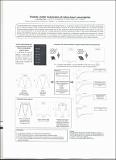Por favor, use este identificador para citar o enlazar a este item:
http://hdl.handle.net/10261/138250COMPARTIR / EXPORTAR:
 SHARE
BASE SHARE
BASE
|
|
| Visualizar otros formatos: MARC | Dublin Core | RDF | ORE | MODS | METS | DIDL | DATACITE | |

| Campo DC | Valor | Lengua/Idioma |
|---|---|---|
| dc.contributor.author | Fernández-Perea, Ricardo | - |
| dc.contributor.author | Cabrillo García, Carlos | - |
| dc.contributor.author | Mukhopadhyay, S. | - |
| dc.contributor.author | Fernández-Alonso, Félix | - |
| dc.contributor.author | Bermejo, Francisco Javier | - |
| dc.date.accessioned | 2016-10-20T07:26:11Z | - |
| dc.date.available | 2016-10-20T07:26:11Z | - |
| dc.date.issued | 2015 | - |
| dc.identifier | issn: 1358-6254 | - |
| dc.identifier.citation | Science &Technology Facilities Council, U.K. 003: 254 (2015) | - |
| dc.identifier.uri | http://hdl.handle.net/10261/138250 | - |
| dc.description | Proceedings of the Molecular Spectroscopy Science Meeting 2015; Open Access funded by Creative Commons Atribution Licence 3.0 | - |
| dc.description.abstract | The strong indications of the untapped potential of Carbon-based nanostructured materials as next-generation sorbents come mainly from simulation and theoretical work [1]. Dispersive interactions among the various carbon nanostructures (graphene, nanotubes, etc) as well as with guest molecules (H2, CO2, etc) are at the core of the relevant physical mechanisms involved. However, the vast majority of the “in-silico” studies rely on effective pairwise descriptions of the dispersive forces (Lennard-Jones). Recent developments of new van-der-Waals DFT functionals [2] provide a convenient starting point to attain a more accurate representation. By making recourse of the SCARF-RAL cluster we have calculated the energy barriers involved in a specific type of stacking fault in graphite using a dispersive DFT functional. The calculations agree well with the experimental data but, the comparison with the standard pairwise potential calculations reveals a discrepancy of an order of magnitude. We show here our ongoing study of the limits as well as of possible improvements of classical pairwise modelisations of the interlayer interactions. | - |
| dc.relation.isversionof | Publisher's version | - |
| dc.rights | openAccess | - |
| dc.title | Towards a better modelisation of carbon-based nanomaterials | - |
| dc.type | artículo | - |
| dc.date.updated | 2016-10-20T07:26:11Z | - |
| dc.description.version | Peer Reviewed | - |
| dc.language.rfc3066 | eng | - |
| dc.rights.license | http://creativecommons.org/licenses/by/3.0/ | - |
| dc.contributor.funder | SCOAP | - |
| dc.relation.csic | Sí | - |
| dc.type.coar | http://purl.org/coar/resource_type/c_6501 | es_ES |
| item.fulltext | With Fulltext | - |
| item.grantfulltext | open | - |
| item.cerifentitytype | Publications | - |
| item.openairetype | artículo | - |
| item.openairecristype | http://purl.org/coar/resource_type/c_18cf | - |
| Aparece en las colecciones: | (CFMAC-IEM) Artículos | |
Ficheros en este ítem:
| Fichero | Descripción | Tamaño | Formato | |
|---|---|---|---|---|
| Towards0001.pdf | 757,5 kB | Adobe PDF |  Visualizar/Abrir |
CORE Recommender
Page view(s)
110
checked on 24-abr-2024
Download(s)
55
checked on 24-abr-2024
Google ScholarTM
Check
Este item está licenciado bajo una Licencia Creative Commons

